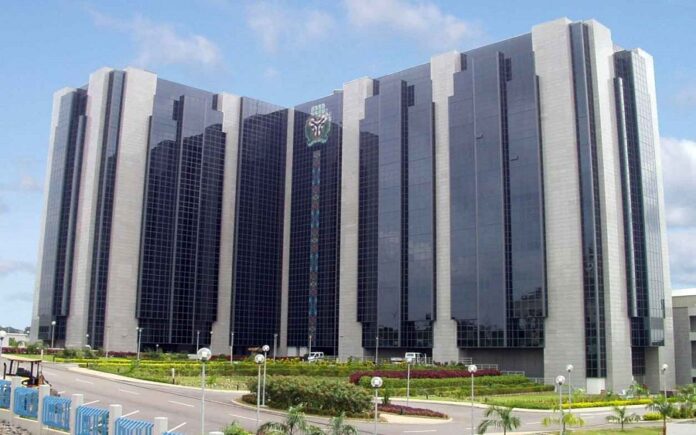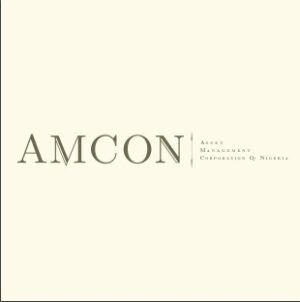By Mike Idi Obadan*
In light of my recent article on foreign exchange and the naira exchange rate, some interested readers have expressed the need for me to throw light on macroeconomic issues including aspects of monetary policy. For example, one reader wrote, “we hear many of these terms but can’t fathom them out … I do hope you might cover ‘MPR’”, that is, the Central Bank of Nigeria’s Monetary Policy Rate which tends to feature in its Communiques after the bi-monthly Meeting of the Monetary Policy Committee.
Monetary policy is one of the key macroeconomic policies which the Central Bank of Nigeria and other central banks deploy to solve macroeconomic problems that plague national economies including high inflation, low economic growth,high unemployment, and external payments disequilibrium.Accordingly, monetary policy aims to help a country to achieve the macroeconomic objectives of price stability, high rate of economic growth and employment and a healthy balance of international position. Monetary policy is very significant because it determines the growth of liquidity or money supply in the economy and its relation to the growth of production. It also decides on the volume of national credit and its distribution between the public and private sectors. Through monetary policy, decisions are made about the volume of money in circulation or money supply as to whether or not it is too much or too little. The volume of money supply in an economy has a direct relationship with the level of prices of goods and services. In the situation where the volume of national output cannot be increased and the rate at which a unit of money is exchanged in an economy (i.e, number of times that the average unit of money is used to purchase goods and services) or the velocity of money is constant, increases in the money supply will lead to a proportionate increase in the price level.
Thus, if the monetary authority considers the quantity of money in the economy to be too much in relation to the growth of national output, and hence causing the inflation rate to rise, a decision will be made to reduce the money supply by tightening monetary policy through the use of various monetary policy instruments such as the monetary policy rate (MPR) (increase by the CBN), cash reserve requirements (CRR) (increase by the CBN), open market operations (Central Bank sells securities in the open money market or to the public to reduce money in circulation), among others. On the other hand, if the volume of money supply is considered to be low or not enough to drive national production, then the above policy instruments will be used in a reverse manner, that is, monetary policy will be relaxed or eased in order to put more money into circulation. This means reducing the MPR and CRR, both of which should, other things being equal, encourage the commercial banks to lower lending rates,create more money / lend more money to investors and the public to finance more investment and consumption demand. Both of these are major determinants of national output. The Central Bank could also have put more money into circulation by buying securities from the public or open market.
Out of the monetary policy instruments, the Monetary Policy Rate has tended to attract more attention from the enlightened public to the extent of being speculated upon by some analysts before every CBN Monetary Policy Committee Meeting as to its direction in terms of if it would be increased or reduced.The MPR which evolved from the Bank’s discount rate of old, is a very significant interest rate which indicates the stance or direction of monetary policy as to whether it is tight or restrictive, on the one hand, and expansionary or easy on the other. It occupies a primacy position in relation to the other market interest rates in the economy. Increases or decreases in the policy rate are meant to signal the deposit money banks as to the desired direction of monetary policy by the CBN and hence the commercial banks should accordingly adjust their interest rates upwards or downwards. The monetary and financial conditions and nature of problems in the economy such as high inflation rate, sluggish growth, high unemployment and external imbalances elicit changes in the MPR and other monetary policy instruments.
In other words, the Monetary Policy Rate is not arbitrarily determined as some economic agents probably think. Rather, the state of the economy is an important consideration and specific factors such as the volume of money and credit in the economy, rate of inflation, economic growth rate, balance of international payments position, among others, are important influencers of the direction of MPR. When the CBN reduces the MPR, it desires to expand bank credit and money supply while an increase in the rate signals its desire to control the expansion of liquidity in the economy. In such situations, monetary policy makers are confronted with a balancing act, that is, the task of ensuring that expansion in domestic liquidity or a reduction of it is consistent with the authorities’ objectives for economic growth, inflation and the balance of payments.
In the last few years, monetary policy making has been a very challenging endeavour for the Central Bank of Nigeria because of the nature of economic problems that the economy has had to grapple with, most of which problems other economies did not encounter, for example, stagflation. Most of the problems have derived from exogenous shocks. A highlight of the key problems is illustrative.
First, is the phenomenon of two debilitating economic recessions in five years: first quarter of 2016 to the first quarter of 2017, and second and third quarters of 2020. While the first recession was triggered by the collapse of the world oil market, the second followed the coronavirus pandemic and the associated economic crisis. These recession periods were characterised by negative economic growth and high rate of inflation at the same time giving rise to the phenomenon of stagflation. The post-recession periods have been characterised by low and fragile growth rates. For example, positive growth resumed in the fourth quarter of 2020 but stood at 0.11 percent. In the first quarter of 2021, growth improved marginally to 0.51 percent but significantly in the second quarter to 5.01 percent, year-on-year. During the trying periods, the fiscal and monetary authorities rightly prioritised growth and sought to spend the economy out of recession, thus necessitating huge injections of liquidity into the economy but with implications for monetary inflation.
Second, other economic problems have subsisted in different degrees. The inflation rate, though decelerating, is still high at 17.01 percent as at August, 2021. It is the situation of low and fragile growth and very high inflation rate at the same time that has given rise to the very challenging phenomenon of stagflation in the country. Unemployment rate is high, especially among youths. As at the end of 2020, the overall unemployment rate stood at 33 percent while a very significant output gap exists. The external sector of the economy is riddled with numerous challenges: current account and overall balance of payments deficits, high exchange rates, uncomfortable external reserves position in the face of low accretion to the reserves, low foreign capital inflows, among others.
On the domestic front, the government’s fiscal position has not improved much: low domestic revenue earnings due to challenges in oil production, high level of government expenditure, lack of fiscal buffers, increasing fiscal deficits which necessitate government borrowing – domestic and foreign. Because of the need to lift the economy out of recession in a period of weak government revenue and absence of fiscal buffers, the total public debt has increased to over N35.0 trillion as at the second quarter of 2021.
The phenomenon of stagflation has made macroeconomic policy making very challenging for policy makers in Nigeria. In particular, monetary policy has faced a dilemma in terms of the direction of policy and the instruments to use. Use of the instruments under the circumstances without properconsideration results in risks. Nigeria’s stagflationary situation contrasts with the experiences of the advanced countries and Emerging Markets and Developing Economies (EMDEs) during the coronavirus-induced global recession of 2020. In the face of the twin health and economic shocks, inflation in those countries never reached a worrisome level.
Global inflation was only expected to hit the long-run objectives of central banks towards the end of 2022 when the negative output gaps begin to narrow. Thus, in most of the advanced economies, inflation remained low, remaining below their long-term targets, generally 2.0%. The economies have not experienced stagflation. And so, the policy choice of the advanced countries and EMDEs to combat the twin crisis and, specifically, exit recession was straightforward – expansionary fiscal and monetary policies. This was the basis of the huge stimulus packages, in the form of fiscal and monetary injections into the economies, implemented by the advanced economies and some EMDEs.
The above scenario sharply contrasts with Nigeria’s economy which similarly experienced the twin crisis but hobbled by stagflation at the same time. This has created a policy dilemma for the government because of the trade-offs involved in attempts to address the problem of stagflation with fiscal and monetary policies. An expansionary monetary policy, for example, to address growth challenges tends to worsen inflation while any attempt to tighten monetary policy to contain inflation would hurt growth. This policy dilemma has remained even though the country has exited recession; the growth rate remains very low and fragile with high level of unemployment while inflation is decelerating in a rather sluggish way. And so, doing what the advanced countries have done to exit recession and hoping to achieve robust non-inflationary growth will not be adequate in the case of the Nigerian economy, largely because inflation is also a challenge to contend with.
What is worth stressing at this point is that in the situation of stagflation in Nigeria, monetary policy makers have faced policy choice challenges in terms of whether to tighten monetary policy to control inflation or relax monetary policy to be able to expand money and credit to improve growth performance. If the economy were to be experiencing only recession or low growth and no inflation, then the matter is relatively simple. The fiscal and monetary authorities would be able to expand fiscal and monetary policies, respectively, to lift the economy out of the recession and/or improve growth. But if there is inflation and no growth problem, the Central Bank could tighten monetary policy by raising the MPR and/or increasing the Cash Reserve Requirements to combat it.
This could also exchange rate depreciation as the increased cost of funds through tightening could limit the excess liquidity to attack the foreign exchange market. But the risk is that tightening monetary policy tends to be antithetical to growth. This is because it tends to raise bank lending rates and hence the cost of funds which hurts credit expansion and reduce investment which will further worsen economic growth performance, unemployment and poverty.
The experience in the country is that commercial banks relate to the CBN’s MPR in asymmetrical way. What this means is that when the MPR signals a tightening of monetary policy stance, commercial banks quickly raise lending rates, thus increasing the cost of funds to investors and businesses. But when the MPR signals the desire of the CBN to implement an expansionary monetary policy, through cheap credit to investors, the commercial banks do not respond as desired byreducing lending rates, thus frustrating the intended policy objective.
It is instructive to note that if, under stagflation, the situation were such that the government had the fiscal muscle to implement strong expansionary fiscal policy (corporate tax cuts, increased government expenditure) to promote growth and lift the economy out of contraction/low growth situation, the Central Bank would implement fairly tight monetary policy to achieve gradual reduction in monetary-induced inflation while the government frontally addresses the structural factors of headline inflation. However, as at now, the fiscal capacity of the government to stimulate the economy and put it on a sustainable growth path is still weak because of lack of fiscal buffers and the heavy negative impact of covid-19 on oil export earnings upon which the country depends rather precariously for naira revenue and foreign exchange earnings.
In light of the foregoing, the peculiar nature of Nigeria’s economic challenges and the limitations imposed on monetary policy should be quite clear. It is one reason that the Bank, in complementing the efforts of the Federal Government, has used the strategy of development finance interventions in the real sectors, especially agriculture, manufacturing and MSMES, to impact growth and employment as well as tackle inflation from the aggregate supply side through increases in the outputs of goods and services produced by the sectors that benefit from its interventions.
* Mike Idi Obadan is a Professor of Economics,Chairman, Goldmark Education Academy, Benin City and formerly the Director-General, National Centre for Economic Management & Administration, Ibadan, Nigeria.



